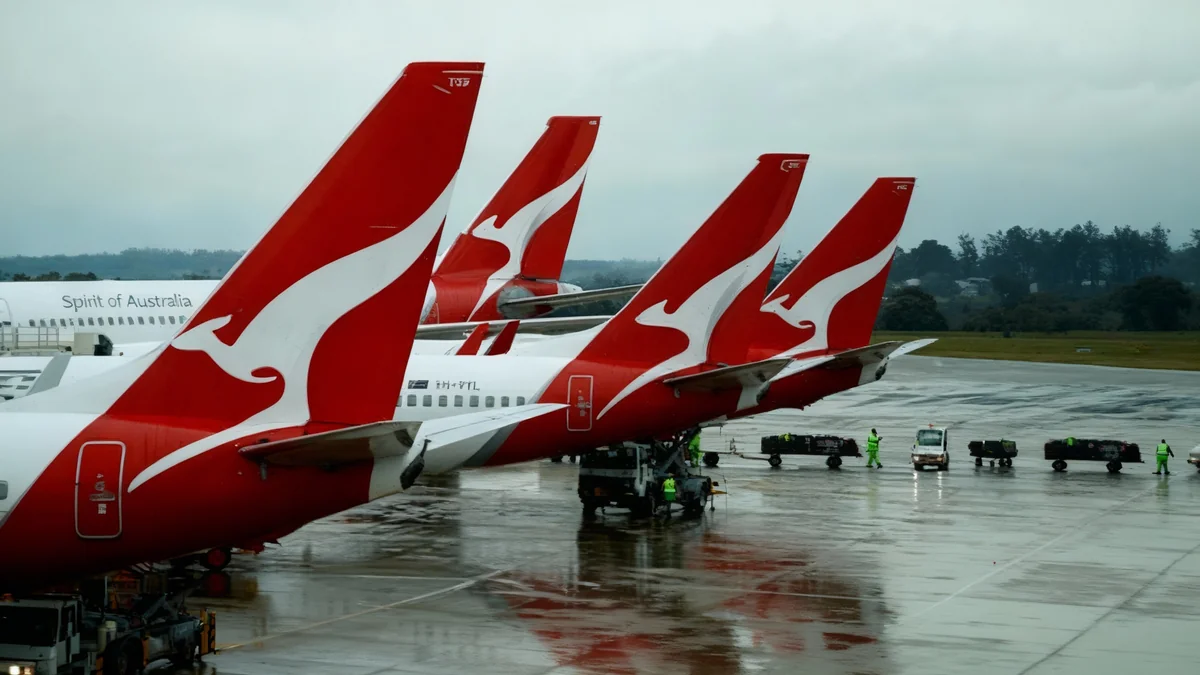Travelers planning flights in the United States over the next ten days should prepare for potential delays and cancellations. A warning from a major budget airline CEO highlights significant disruptions expected to begin this Friday. These issues stem from a shortage of air traffic controllers amidst an ongoing government shutdown, prompting the Federal Aviation Administration (FAA) to reduce flight capacity at 40 major airports nationwide.
Key Takeaways
- Flight capacity reduced by 10% at 40 major US airports.
- Air traffic controller shortage due to government shutdown is the primary cause.
- Travelers advised to consider booking backup tickets on other airlines.
- Impacted flights are scheduled between 6 AM and 10 PM; international flights are exempt.
Airline CEO Advises Backup Tickets
Frontier Airlines CEO Barry Biffle recently issued a strong recommendation to travelers. In a LinkedIn post, Biffle urged passengers flying in the coming days to book a "backup ticket on another carrier." He specifically mentioned that flights would be "trimmed due to the ATC staffing starting Friday."
This advice is crucial for anyone who needs to reach their destination without being stranded. Biffle suggested booking an Economy ticket on Frontier. This allows passengers to reuse the ticket value if changes are needed or if the flight is canceled. He emphasized that cancellation would likely leave travelers stranded without an alternative plan.
"If you are flying Friday or in the next ten days and need to be there or don’t want to be stranded I highly recommend booking a backup ticket on another carrier," Biffle wrote.
Impact on Travelers and Airlines
The CEO's warning underscores the severe challenges facing the airline industry. A government shutdown directly affects federal employees, including air traffic controllers. Many controllers have not received a full paycheck since mid-October, leading to increased sick leave or vacation days.
This situation creates a ripple effect, forcing airlines to adjust their schedules. The goal is to maintain safety standards despite reduced staffing. Passengers are advised to monitor their flight status closely and consider Biffle's recommendation for alternative travel arrangements.
Flight Reduction Facts
- Reduction: 10% cut in flight capacity.
- Affected Airports: 40 major airports across the US.
- Timing: Cuts go into effect Friday morning.
- Hours: Impacted flights are between 6 AM and 10 PM.
- Exemptions: International flights are not affected.
FAA Announces Widespread Flight Cuts
The Federal Aviation Administration confirmed on Wednesday its decision to reduce flight capacity. This measure will impact 40 major airports nationwide. The FAA states this move is a proactive safety measure. It aims to prevent potential issues arising from the persistent lack of air traffic controllers during the government shutdown.
FAA Administrator Bryan Bedford clarified the agency's primary focus. "Our sole role is to make sure that we keep this airspace as safe as possible. Reduction in capacity at 40 of our locations," Bedford stated during a press conference. This decision could lead to thousands of flights being canceled or delayed.
Key Affected Airports
Airports Facing Capacity Reductions
The list of affected airports includes some of the country's busiest travel hubs. These locations were chosen based on air traffic pressure, not light travel volume. The goal is to alleviate stress on the system where it is most needed.
- Hartsfield-Jackson Atlanta International
- All three New York City-area airports (JFK, LaGuardia, Newark Liberty)
- Chicago O’Hare International
- Boston Logan International
- Dallas/Fort Worth International
- Los Angeles International
- Miami International
- Seattle/Tacoma International
- Denver International
- Phoenix Sky Harbor International
- Orlando International
- Las Vegas McCarran International
- San Francisco International
- Washington Dulles International
- Ronald Reagan Washington National
This extensive list covers a broad geographical area, indicating the widespread nature of the staffing challenge. The cuts are designed to manage the system effectively and prevent any compromise to safety.
Safety Remains Top Priority
Both FAA Administrator Bryan Bedford and Transportation Secretary Sean Duffy emphasized that safety is the paramount concern. They described the flight reductions as a proactive step. This measure aims to prevent a safety problem from manifesting fully.
Bedford noted that early indicators suggested potential deterioration if no action was taken. "We’re not going to wait for a safety problem to truly manifest itself when the early indicators are telling us we can take action today to prevent, you know, things from deteriorating," he explained. He reassured the public that the air travel system remains extremely safe.
Government Shutdown's Role
The ongoing government shutdown, which began on October 1, has directly impacted federal employees. Air traffic controllers, like many others, have faced pay disruptions. This financial strain contributes to staffing challenges as some controllers may opt for sick days or vacation time.
The situation highlights the broader implications of government shutdowns on critical infrastructure. The aviation sector relies heavily on a stable and fully funded federal workforce to operate safely and efficiently. Resolution of the shutdown is eagerly anticipated by both the industry and the traveling public.
Advice for Upcoming Travel
Given these developments, travelers should take several precautions. First, constantly check their flight status directly with their airline. Second, consider the advice from the Frontier CEO about booking a flexible backup ticket, especially for essential travel.
Third, arrive at the airport with extra time, as potential disruptions could lead to longer processing times. Finally, remain patient and understanding. Airline and airport staff are working under challenging circumstances to manage the situation safely.
The flight restrictions will remain in effect until the air traffic control staffing levels stabilize. This will likely depend on the resolution of the government shutdown and the full return of the workforce. Until then, flexibility and preparedness will be key for air travelers.





